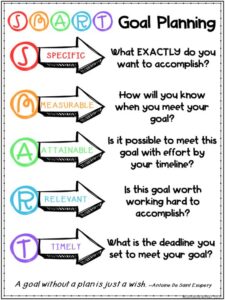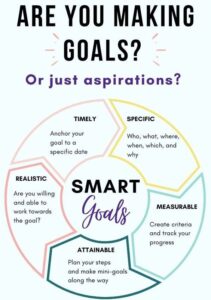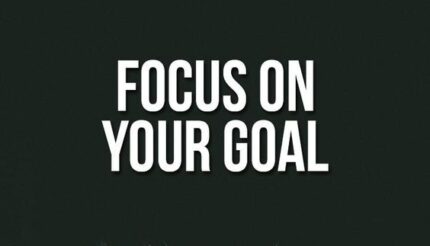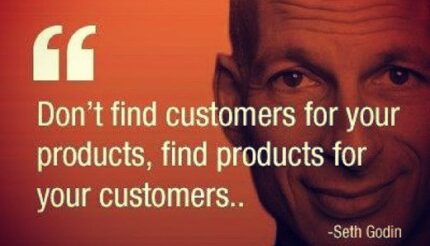Business Goals: Myths About Goal Setting
Do you hate setting business goals that don’t work?
Ever wondered how others seem to know how to set great goals?
Read on, and you’ll learn how to use and apply the same secret weapons that master goal-setters are using right now to scale their companies.
And change their lives.
As you carefully scan each and every word of this page, you will being to discover a new revolutionary method of goal setting.
So if you’d like to scale your business, without having to sell your firstborn child to raise the capital…
…this information will be crucial to you.
And I’ll be honest with you.
When I first started setting goals, one of the most difficult things I had to overcome was a lack of ‘goal setting’ knowledge. With little to invest and no experience at all, I faced the same limited options that most people face when trying to grow a business.
Let’s face it.
Not all business goals are equal.
In fact, very few are.
I didn’t have a clue where to start.
BUT NOT ANYMORE!
Because I discovered a way of setting goals that make growing your business simple and easy.
And now you can too.
So please excuse my audacity, but I’m willing to bet that your business can be a lot more profitable than it is now.
The fact is that no matter who you are, whether you are young or old…
Weak or strong,
Rich or poor,
You can start setting goals that change your life.
And I want to show you the way in which you may completely and easily, without inconvenience or loss of time, come into possession of new life,
Vigor,
Energy,
Development,
And a higher realisation of life and success.
So let’s get down to it and look at how you can set great goals.
But first, let’s look at why it’s so damn important…

Business Goals
Why It’s Important To Have Goals…
On a beautiful late spring afternoon, 25 years ago, 2 young men graduated from the same university.
They were very similar.
Both had been better than average students.
Both were personable.
And both of them were filled with ambitious dreams for the future.
But only one of them succeeded.
He achieved incredible success while his oldest friend suffered and struggled.
And what was the differentiator?
The young man that succeeded, had very clear goals.
Backed by an Action Plan that he worked from.
Whilst his old friend had only a dream.
Those that have goals, usually finish in front of those that don’t.
Why?
Because the vision guides them.
In the mid-1960s, Walt Disney’s dream was on the verge of coming true. He’d dreamt of opening Disneyworld Florida for a long time.
But there was one slight problem.
Walt was unwell.
So unwell, that he was going to miss the official opening of Disneyworld Florida.
And on the day that Disneyworld was opened, a journalist said to Roy Disney (Walts’s brother) “Aren’t you sad that Walt will never get to see it?”
What a question to ask on such a big, celebratory day.
And Roy said, “That’s why you’re a journalist.
Walt did see it.
That’s why you get to.”
Having a clear vision of what you want, dramatically increases the odds of getting it.
When people don’t spend the time to sit down and write out goals, they end up working every day without any direction.
And that leads to poor results.
Instead, when you have clear goals, you have something to move towards.
It makes all the difference in the world.
One example of a study conducted on goal setting is the study by Edwin A. Locke and Gary P. Latham. It was published in 1990 and was titled “A Theory of Goal Setting & Task Performance.”
This study is widely recognised as an influential piece of work in the field of goal setting.
In their research, Locke and Latham examined the impact of setting specific and challenging goals.
They conducted a meta-analysis of previous studies and found that setting specific and challenging goals led to higher levels of performance compared to those that set vague or easy goals.
The study also revealed that goal setting was more effective when accompanied by feedback.
Locke and Latham’s study emphasised the importance of setting clear, specific, and challenging goals to enhance motivation, focus, and performance.
Their research gave us valuable insights into the psychology of goal setting.
And its impact on individual performance across different areas, including business, education, and sports.
That’s just one example that suggests goal setting will dramatically improve your performance.
And your final destination.
How To Set Business Goals
Now that we understand how important it is to set business goals, let’s look at HOW to set them.
We’ll also look at how to write a business plan that’s built from the goals you set.
There are a few basic principles to think about when it comes to goal setting.
The first is:
Start With The End In Mind
When you start with the end in mind… setting business goals is easy.
“Start with the end in mind” is a concept created by Stephen R. Covey in his book “The 7 Habits of Highly Effective People.”
It basically means that before you set goals, you should have a clear idea of what you want to achieve in the end.
Imagine you’re planning a road trip.
Before hitting the road, you need to know your destination.
Similarly, in life, it’s important to have a vision of your desired outcome or goal before you start working towards it.
When you start with the end in mind, it helps you in a few ways.
First, it gives you a sense of purpose.
When you know where you want to go, it becomes easier to stay focused and motivated.
It also helps you prioritise your efforts by spotting the tasks and activities that align with your ultimate goal.
This way, you can avoid getting distracted by things that won’t contribute to your desired outcome.
Having a clear vision of the end result also allows you to create a plan or roadmap.
It helps you break down your goal into smaller steps, making it more manageable.
By knowing the specific actions required, you can better prepare and take the necessary steps toward achieving your goal.
Using It To Set Business Goals
So when you’re setting business goals you should start with the end in mind.
Rought translation…
Decide what you want PERSONALLY, and then reverse engineer from there.
For example, if you wanted to live in the Maldives…
You’d need to work backwards and decide how your business would be set up.
You might decide that you’d need to have £1 million in profit.
And that would mean you’d need to make £10,000,000 in turnover.
The business would also need to work without you.
Which means you’d need to hire a general manager.
And the beautiful thing is, when you start with the end in mind and work backward from there, it becomes obvious what you have to do.
Then you can get to work and start putting first things first.

Having Business Goals
What Good Goals Look Like
There’s a big difference between poor goals and good goals.
And there’s also a difference between good goals and great goals.
Let’s start with poor goals…
What do they look like?
Generally speaking, poor goals are vague.
There’s no real clarity on what the person wants.
When it comes to setting business goals, a poor goal would be “to make more money”.
Well, how much is more money?
Because technically, I could give you £5 and that’s more money.
Goals are also poor when they don’t mean anything to the person setting them.
“More money” is another good example of that.
It’s meaningless.
If it was ‘more money to help starving kids in Africa that we go seeing once a year’, it’s a different story.
And funnily enough, when a goal is vague, it’s usually meaningless too.
But what about ‘Good Goals’?
What do they look like?
Firstly, good goals are small, short-term goals.
And they should link directly to your GREAT, LONG TERM goals which are much bigger.
A good goal can be summarised really nicely by the ‘SMART’ principle.

Good Business Goals Are SMART Goals
SMART goal setting is a popular framework that helps you set goals in a more effective way.
The SMART principle is fantastic for SHORT-TERM GOALS.
‘SMART’ is an acronym that stands for Specific, Measurable, Achievable, Relevant, and Time-bound.
Each letter represents a different aspect of goal setting…
- Specific: Your goal should be clear and specific, leaving no room for ambiguity. Instead of saying, “I want more money,” you would make it specific like, “I want to make an extra £10,000 per week.”
- Measurable: Your goal should have a way to track your progress or measure your success. This means defining specific criteria or milestones that indicate you’re making progress. For example, if your goal is to lose weight, you could set a measurable goal of losing 5 kilograms in two months.
- Achievable: Your SHORT TERM GOALS should be realistic and attainable. It’s important to set goals that challenge you but are still within reach. Setting overly ambitious goals that are impossible to achieve in the short term can be demotivating. So, ensure that your goal is something you genuinely believe you can accomplish with effort and commitment.
- Relevant: Your goal should be relevant and aligned with your long-term aspirations or your ‘north-star’. Consider why this goal is important to you and how it fits into your overall vision. This helps you stay focused and motivated.
- Time-bound: Your goal should have a specific timeframe or deadline. Setting a timeline creates a sense of urgency and helps you prioritise your actions. For example, instead of saying, “I want to write a book someday,” you could set a time-bound goal like, “I want to finish writing the first draft of my book within six months.”

SMART
By following the SMART framework, you set goals that are clear, trackable, attainable, relevant, and time-bound. It provides a structured approach to goal setting that increases your chances of success and helps you stay motivated along the way.
The key thing to remember is this, SMART goals are good, but not great.
And they are perfect for setting SHORT-TERM goals.
But not for the long term.
What Great Goals Look Like
Great goals are your big, fat, hairy goals.
Your ‘north star’.
And they should be long-term.
Your ‘good’ goals are the short-term goals that help you move towards the ‘north star’.
You don’t want to set short-term goals on random subjects.
They should all be moving you towards the big one.
So how do you define a ‘GREAT’ goal other than saying it’s BIG?
A great goal has 3 components.
#1
OUTRAGEOUS
When you tell people what your outrageous goal is, they laugh!
And they laugh because they think it’s outrageous.
‘It’s too big’ they’ll say.
A goal this big must be great.
Most people wouldn’t dream of setting it.
Or at least, most people over 11 years old.
Children are GREAT goal-setters.
They use their imagination and think big.
But as we get older we start worrying about what other people think.
And ‘what if we fail’?
But none of that matters.
So set something huge.
What are the other features of a great goal?
#2
COURAGEOUS
If you set something big enough.
And outrageous enough.
It means you’ll have to show COURAGE in order to achieve it.
And here’s a really beautiful part of GREAT goal setting…
When you achieve something that took guts, and courage,
Is where we find fulfillment.
And feel proud of ourselves.
In today’s world…
That can be rare.
So make sure your great goal is outrageous and requires you to be courageous.
But there’s one more thing…
#3
TRANSFORMATIVE
A great goal is transformative.
Which means you’ll have to grow and change as a person in order to get there.
If you don’t transform along the journey, the goal was too small.
But here’s something else that’s incredible about setting GREAT goals…
You shouldn’t set a great goal for what you’ll get…
Instead, set a great goal for who you’ll become on the journey to completing it.
That’s worth more than any amount of gold at the end of the rainbow.
Because once you grow into that person, you’ll be able to do it over and over again.

Business Goals
SUMMARY
Sometimes setting business goals can be complicated.
But not if you use the framework mentioned above.
All you have to do is start with the end in mind and set a great goal.
Something big, scary, and transformative.
And when you’re clear on your ‘north star’…
Break the big goal down and work backwards.
By reverse engineering the goal, and breaking it down into ‘good’ small goals, it becomes really obvious what you should do next.
And once you’ve done all that, you’ll have your first steps.
Now all that’s left to do is start working on the plan and taking action!





